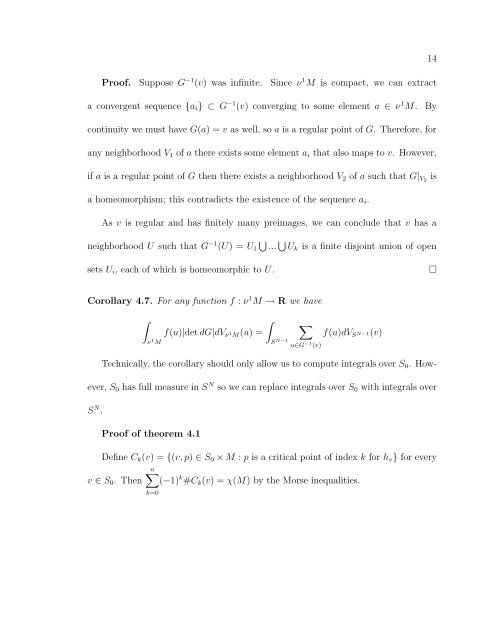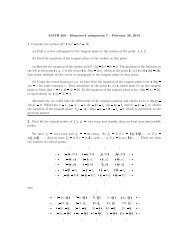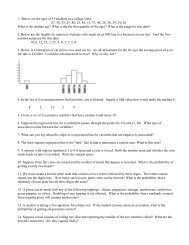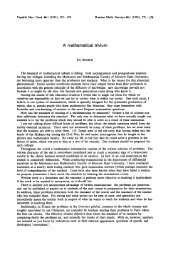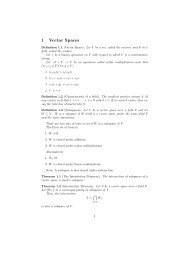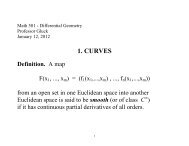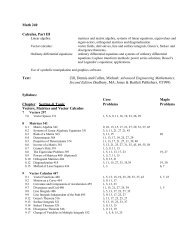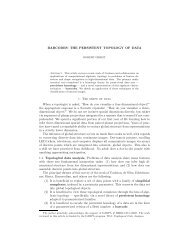MORSE THEORY AND THE GAUSS-BONNET FORMULA Alina ...
MORSE THEORY AND THE GAUSS-BONNET FORMULA Alina ...
MORSE THEORY AND THE GAUSS-BONNET FORMULA Alina ...
You also want an ePaper? Increase the reach of your titles
YUMPU automatically turns print PDFs into web optimized ePapers that Google loves.
Proof. Suppose G −1 (v) was infinite. Since ν 1 M is compact, we can extract<br />
a convergent sequence {ai} ⊂ G −1 (v) converging to some element a ∈ ν 1 M. By<br />
continuity we must have G(a) = v as well, so a is a regular point of G. Therefore, for<br />
any neighborhood V1 of a there exists some element ai that also maps to v. However,<br />
if a is a regular point of G then there exists a neighborhood V2 of a such that G|V2 is<br />
a homeomorphism; this contradicts the existence of the sequence ai.<br />
As v is regular and has finitely many preimages, we can conclude that v has a<br />
neighborhood U such that G−1 � �<br />
(U) = U1 ... Uk is a finite disjoint union of open<br />
sets Ui, each of which is homeomorphic to U. �<br />
Corollary 4.7. For any function f : ν 1 M → R we have<br />
�<br />
ν 1 M<br />
�<br />
f(u)|det dG|dVν1M(u) =<br />
�<br />
SN−1 u∈G−1 (v)<br />
f(u)dV S N−1(v)<br />
Technically, the corollary should only allow us to compute integrals over S0. How-<br />
ever, S0 has full measure in S N so we can replace integrals over S0 with integrals over<br />
S N .<br />
Proof of theorem 4.1<br />
Define Ck(v) = {(v, p) ∈ S0 × M : p is a critical point of index k for hv} for every<br />
n�<br />
v ∈ S0. Then (−1) k #Ck(v) = χ(M) by the Morse inequalities.<br />
k=0<br />
14


